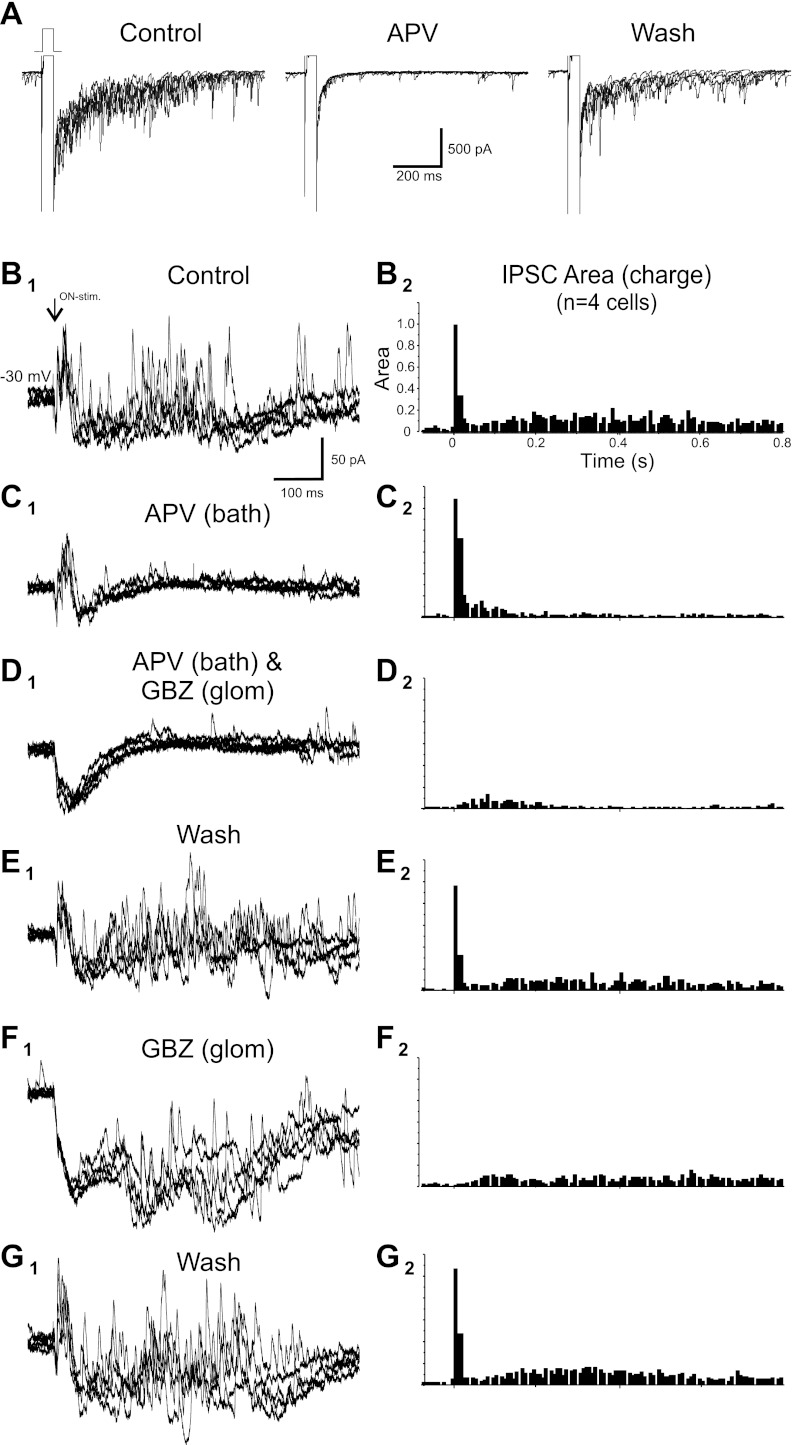Fig. 3.
Intraglomerular and GC inhibition of MCs. A, left: voltage-clamp recording of a MC (internal solution contained high chloride; bath contained 1 μM TTX). Voltage steps from −70 to 0 mV evoked extensive feedback IPSCs. Middle, addition of dl-amino-5-phosphovaleric acid (APV) to the bath abolished most step depolarization-evoked IPSCs. Right, washout of APV restored evoked IPSCs. B1, C1, D1, E1, F1, and G1: separate experiments with voltage-clamp recording of a MC (Vh = −30 mV; internal solution contained QX-314, Cs2+, and LY; bath solution contained aCSF only) showing responses to ON stimulation (5 superimposed sweeps). B2, C2, D2, E2, F2, and G2: normalized population PSTHs for the IPSC integrated area averaged from multiple cells. B: control. In aCSF, ON stimulation evoked an initial EPSC followed by a rapid onset early barrage of IPSCs and longer-latency, lower-frequency IPSCs. C: Bath application of 50 μM APV attenuated late IPSCs with no change of early IPSCs. D: with APV still in the bath, intraglomerular injection of 100 μM GBZ abolished early IPSCs. E: washout of APV and GBZ restored both early and late IPSCs. F: glomerular injection of 100 μM GBZ abolished early IPSCs and reduced late IPSCs by ∼45%. G: washout of GBZ restored all IPSCs.

